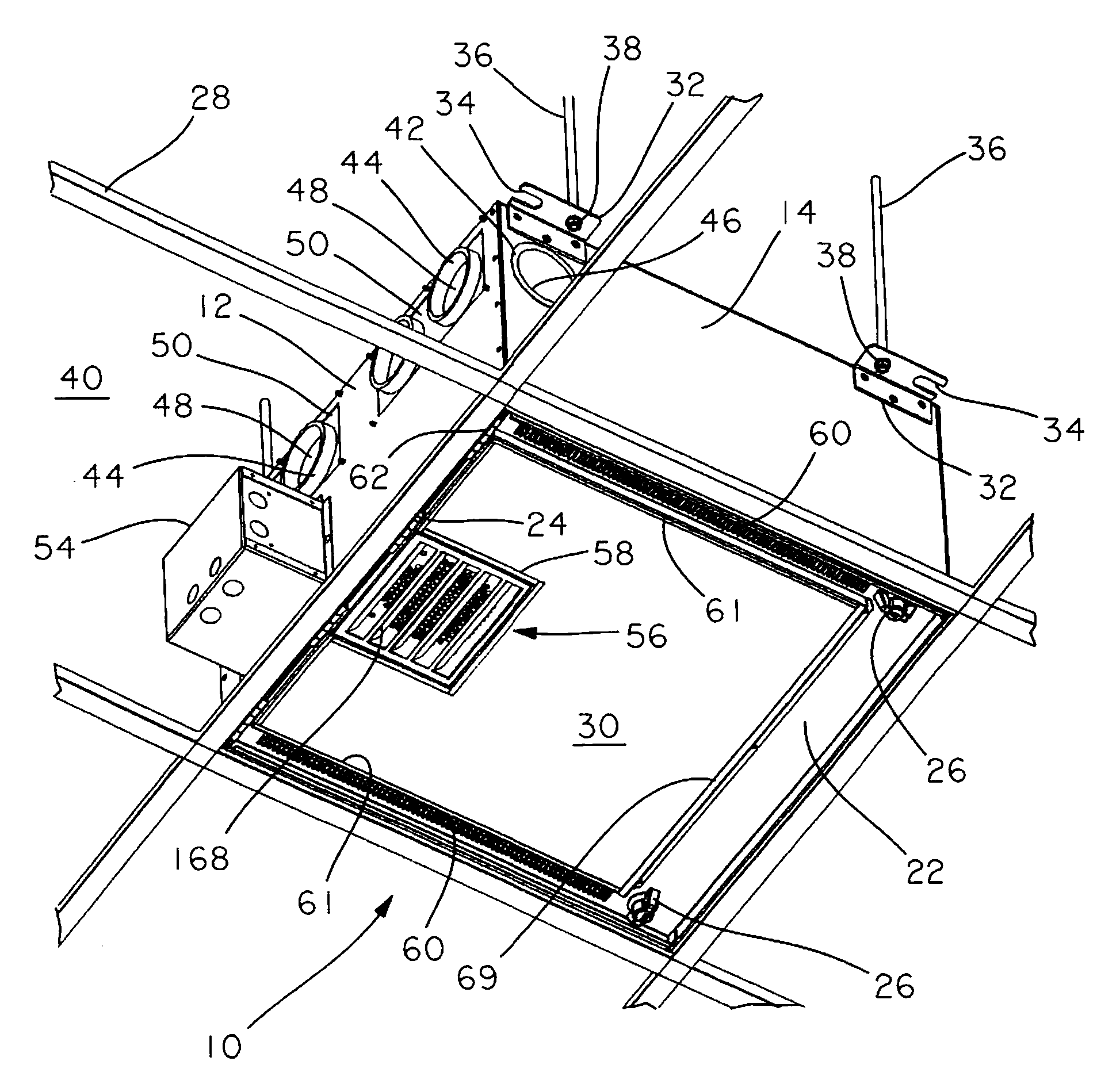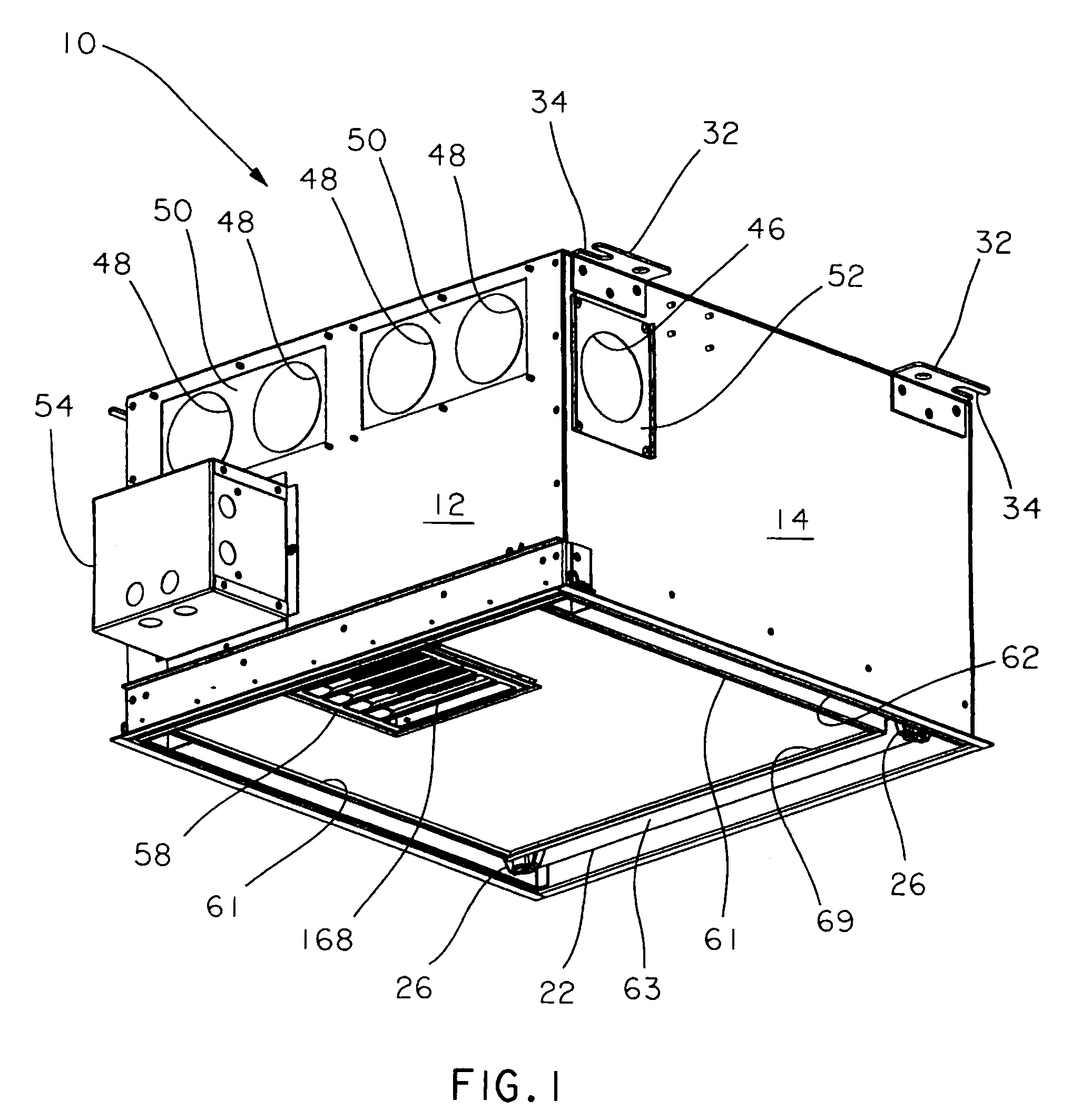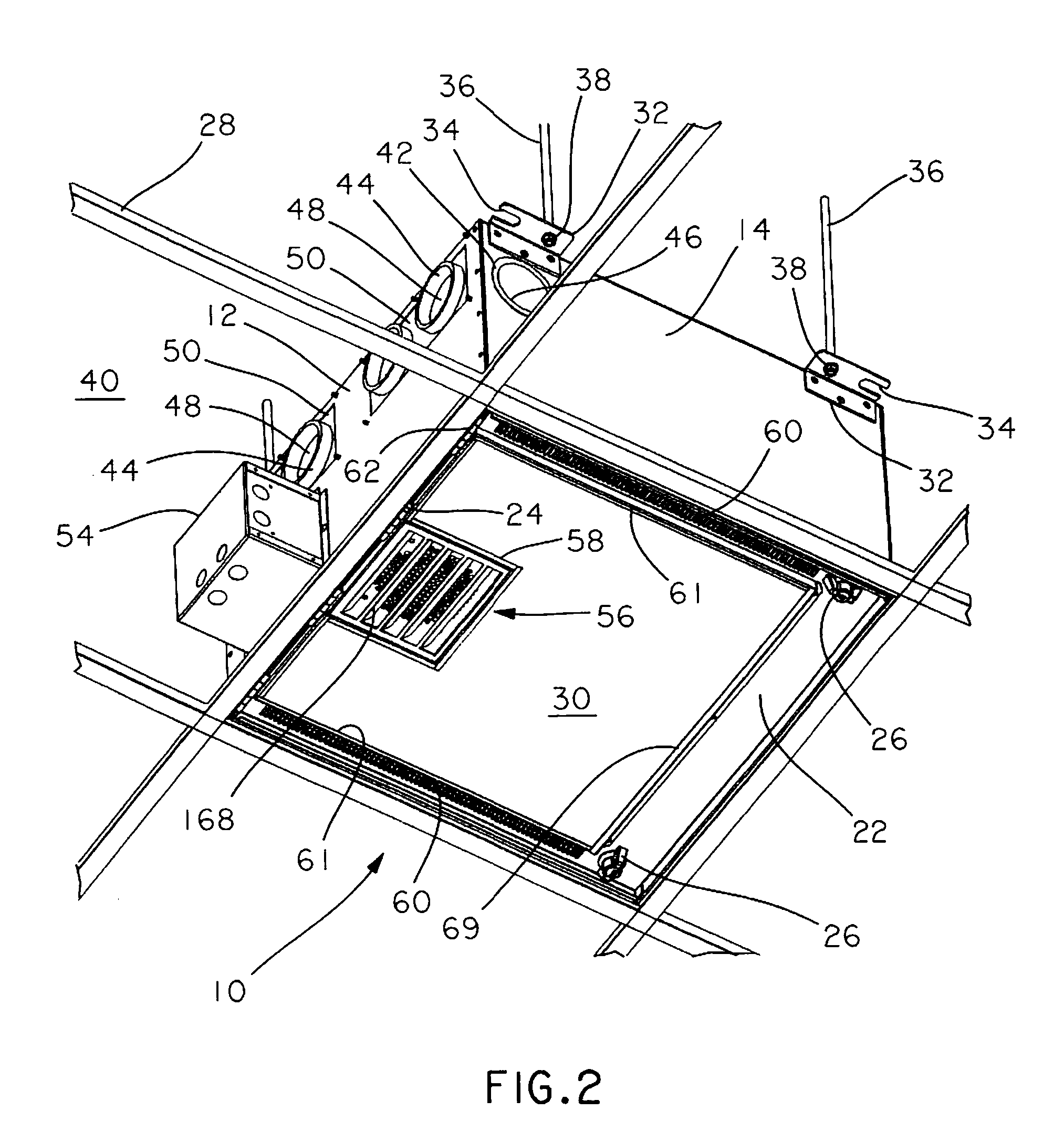In-Ceiling Zone Cabling Enclosure
a cabling enclosure and ceiling-zone technology, which is applied in the installation of lighting conductors, electrical apparatus casings/cabinets/drawers, coupling device connections, etc., can solve the problems of insufficient structural strength, inability to efficiently provide enclosures of the type described, and inability to adapt to the weight of the ceiling-zone cabling enclosure, etc., to achieve convenient conversion, maintain proper air flow, and strong structural design
- Summary
- Abstract
- Description
- Claims
- Application Information
AI Technical Summary
Benefits of technology
Problems solved by technology
Method used
Image
Examples
Embodiment Construction
[0026]Referring to FIG. 1 an embodiment of the in-ceiling zone cabling enclosure of the present invention, for both active and passive equipment, is generally designated by the numeral 10. Enclosure 10 is bounded by four upstanding walls: rear wall 12, side wall 14, front wall 16 and side wall 18, that provide a generally square shape to the enclosure and create a volume in the enclosure. Enclosure 10 also is bounded by a top panel 20 attached to each of the walls 12, 14, 16 and 18, and an access door assembly 22 is pivotally attached to the bottom of rear wall 12 by means of hinges 24 (FIG. 2) or any other suitable pivotal attachment mechanisms as are known in the art, such as the hinge pin shown in FIG. 16. In one embodiment, access door assembly is pivotally attached to opposed side walls 14 and 18 (FIGS. 4, 16). Access door assembly 22 is held in its closed position against the bottom edges of walls 12, 14, 16 and 18 by a pair of wing nut operated latch assemblies 26. In the ill...
PUM
 Login to View More
Login to View More Abstract
Description
Claims
Application Information
 Login to View More
Login to View More - R&D
- Intellectual Property
- Life Sciences
- Materials
- Tech Scout
- Unparalleled Data Quality
- Higher Quality Content
- 60% Fewer Hallucinations
Browse by: Latest US Patents, China's latest patents, Technical Efficacy Thesaurus, Application Domain, Technology Topic, Popular Technical Reports.
© 2025 PatSnap. All rights reserved.Legal|Privacy policy|Modern Slavery Act Transparency Statement|Sitemap|About US| Contact US: help@patsnap.com



